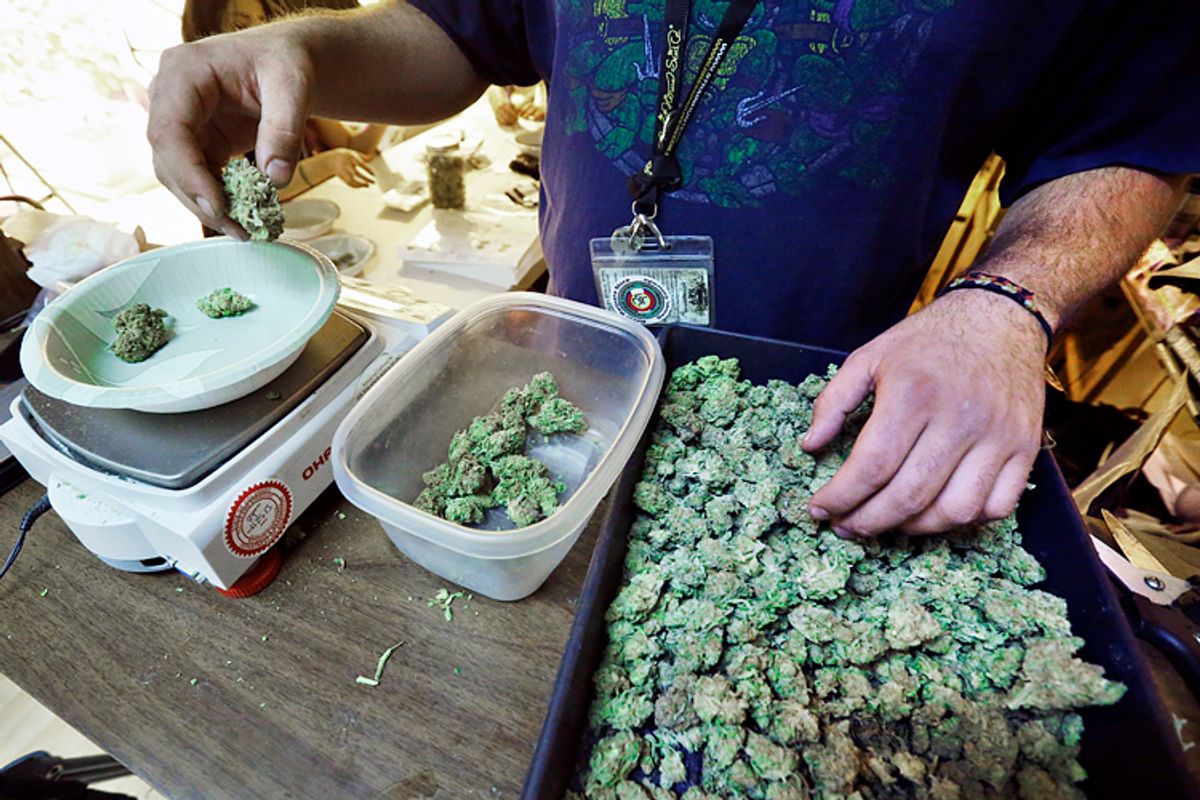 Smoking pot is starting to seem old-school. Vaporizing is on the rise, but the real competition for smoked buds is marijuana edibles. Edibles make up an ever-increasing proportion of marijuana sales in legal states and medical marijuana states, and at this point, the market appears insatiable.
Smoking pot is starting to seem old-school. Vaporizing is on the rise, but the real competition for smoked buds is marijuana edibles. Edibles make up an ever-increasing proportion of marijuana sales in legal states and medical marijuana states, and at this point, the market appears insatiable.
And these aren't your father's edibles. Back in the day, edibles basically meant creating marijuana butter and using it in your recipes, and your pot cookies tasted like weed. Now edibles come in all sorts of alluring (and tasty) forms, from fudge, candy bars and lollipops to cannabis coffees and teas. The only limit appears to be the entrepreneurial imagination.
But—as New York Times columnist Maureen Dowd infamously found out—edibles can be tricky. Unlike smoked marijuana, whose effects are almost instantaneous, allowing users to stop when they feel high enough, edibles take between a half hour and an hour to take effect. Get impatient, eat some more, and suddenly, you've developed a severe case of sustained couch-lock, or something more disagreeable.
It isn't just the length of time it takes to feel their effects that makes edibles a bit tricky. Here, thanks to the Cannabist, are five reasons edibles can be unpredictable, especially when compared to smoked buds.
1. Eating edibles isn't the same thing as smoking buds.When you touch a flame to a bud, it is decarboxylated, the psychoactive material in the bud transformed into smoke that goes into your lungs and then directly into your bloodstream. With edibles, the plant has already been decarboxylated during extraction process. That means that, depending on the extraction process, the chemical properties of the pot could have changed. Also, when you eat instead of smoke pot, the cannabinoids do not go directly into the bloodstream, but first pass through the liver. Little is known about how eating versus smoking changes the ratio of the psychoactive compounds (THC, CBD, CBN, etc.) in the end product or in your body.
2. Edibles are generally made from undifferentiated trim. Growers know their buds are more valuable in the smoking market than as ingredients for edibles, but edibles makers know there is still enough THC in the plant waste (trim) to produce edibles with psychoactive effects. Growers are happy to get something for their trim—they used to throw it away—and manufacturers are happy to get usable trim material at a cheap price, so both growers and manufacturers are happy with the trim solution. But when it comes to product predictability, the problem is most edibles companies buy their trim from multiple growers growing multiple strains. Just as smoking a joint of pure sativa produces a different high from a joint of pure indica, pure sativa trim would behave differently from pure indica trim. But in edibles, you're not getting pure product; you're getting a mish-mash of trim with different characteristics.
The secret of extraction is that it can concentrate that low-potency trim into high-potency cannabis oil, but the process also eliminates terpenes (which provide taste and scent) and many cannabinoids present in the whole plant. That can make cannabis oils derived from a specific variety affect you differently than actually smoking that variety. Some edibles makers use whole buds instead of trim; that's like the difference between a fine Scotch grown with high-quality grain and rot-gut vodka made out of cheap potatoes.
3. Different foods interact differently with marijuana.No one really knows how that works. This is a function of science, or more precisely, the lack of science around edibles. By now, smoked weed and how it works is fairly well understood, but the science around how marijuana interacts with different foods remains to be done. It does appear, however, that marijuana may act as a catalyst with some herbs, and consuming them together could have different results from consuming them separately. We just don't know at this point.
4. The science behind edibles is a work in progress.Although it's been more than 20 years since Brownie Mary (Mary Jane Rathbun) began handing out pot brownies to AIDS patients in San Francisco, the science around edibles is seriously lagging. While research on marijuana in general has been restricted by the government, research on edibles faces the same bureaucratic challenges and has only just begun. There is little scientific basis for any specific claims made by edibles purveyors. Caveat emptor.
All that said, there is no call for panic, just common sense. We didn't need peer-reviewed scientific research to know that pot gets you high and we don't need to know all the hard science to understand that eating too many brownies will get you too high. Ask your pot purveyor about his products, start small and be patient. You can find out through self-experimentation what works for you, and you don't have to go all Maureen Dowd to do it.

Shares